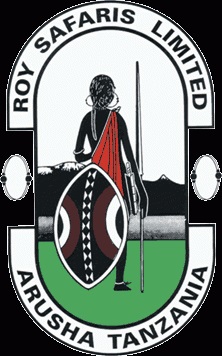 The panoramic views of Table Mountain are certainly one of the best ways to understand the dazzling and contrasting attractions of Cape Town. Taking the five-minute cable car trip to the top of Table Mountain is not just a fabulous opportunity to photograph one of the world’s greatest panoramic views but it is also a wonderful chance for anyone visiting Cape Town for the first time to establish some useful orientation.
The panoramic views of Table Mountain are certainly one of the best ways to understand the dazzling and contrasting attractions of Cape Town. Taking the five-minute cable car trip to the top of Table Mountain is not just a fabulous opportunity to photograph one of the world’s greatest panoramic views but it is also a wonderful chance for anyone visiting Cape Town for the first time to establish some useful orientation.

Some 1,089 metres above Cape Town it soon becomes clear this iconic holiday destination and legislative capital of South Africa has sprawling districts that spread out into the province known as Western Cape located at the southerly tip of the continent.
Looking out to sea, one can appreciate how the Atlantic Seaboard runs from the famous V&A Waterfront round to the picturesque Hout Bay. Cape Town’s Riviera has a series of sandy beaches and dramatic cliffs. The coastal neighbourhoods include Green Point, Sea Point, Clifton and Camps Bay.

The Cape’s peninsula is home to the Table Mountain National Park which encompasses the Cape of Good Hope. The Portuguese explorer Bartolomeu Dias was the first European to round the Cape Peninsula in 1488, one of many epic expeditions searching for a sea route to the East. Indeed, Cape Town’s emergence into a city has its origins in the need for crews bound from Europe to the East to find a safe harbour for re-supplying their ships.
North of the city of Cape Town is the Blaauwberg region, famed for its sandy beaches and several towns are located in the vicinity which is known for its great views of Table Mountain and Robben Island. Indeed the tiny island, where Nelson Mandela and other prisoners of the Apartheid regime were held captive, is clearly visible from the mountain top.
Beyond the airport, heading southeast from the city centre, is Cape Town’s largest residential area known as the Cape Flats which include areas (often called ‘townships’) inhabited by ‘coloured’ (mixed race) and black communities. Low income settlements are a stark reminder that despite the immense changes in this very special nation, many people from the various communities living in post-Apartheid South Africa face a variety of social and economic challenges.

Looking directly down from the Cape is the vibrant central business district of the country’s oldest town. Over 350-years the heart of the Mother City has been shaped by a variety of settlers which is reflected in the architecture of this elegant and welcoming metropolis. The Southern Suburbs run along the eastern edge of Table Mountain down towards Muizenberg on the coast of False Bay.
Drive some thirty minutes from the central business district to find the northern suburbs and the Durbanville Valley that includes 13 wine estates. Look out for the upcoming post on the wonderful Durbanville Hills wine estate.
Finally, just 45 minutes from the airport the jewel known as the Cape Winelands combine award-winning vineyards, outstanding accommodation, gourmet food and sensational scenery. Here you will find Stellenbosch, Paarl, Franschoek and other destinations familiar to lovers of South African wine.

Over the coming weeks, SCF will run a special Cape Town Series of posts covering food, drink and vacation topics. Visit Cape Town Tourism for more information about what to see, do, eat, drink and experience in the Mother City.
Finally, here are some top tips for visiting Table Mountain:
*Check opening times and key information with Table Mountain Aerial Cableway
*Remember the service can be affected by high winds so check if the cableway is operating before departing for Table Mountain.
*It is more convenient to use partner ticket outlets (including Cape Town Tourism’s office) to pre-purchase and avoid lining up to buy a ticket at the site itself.
*Wear something warm as the top of Table Mountain can be windy. Dress appropriately if you plan to explore one of the three hiking trails starting from the upper cable station.
*There are various transport options for reaching the cableway. It was especially convenient going by car with tour guide and driver Ameer who has an excellent knowledge of Table Mountain. He was able to check the opening status of the cableway on the day and dropped us right by the entrance area.










